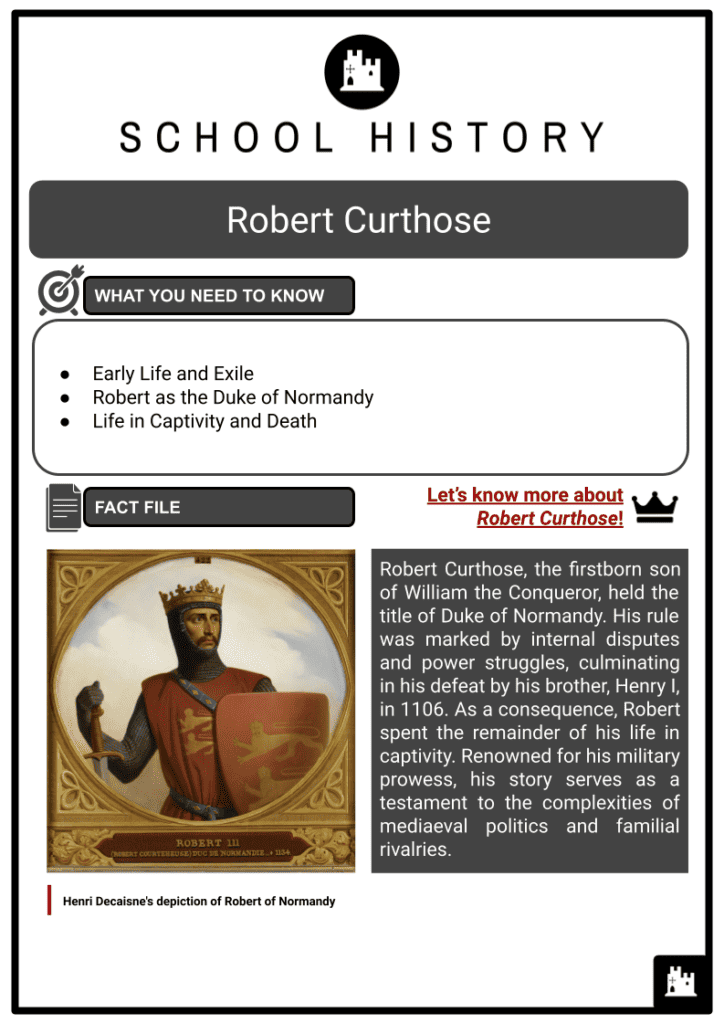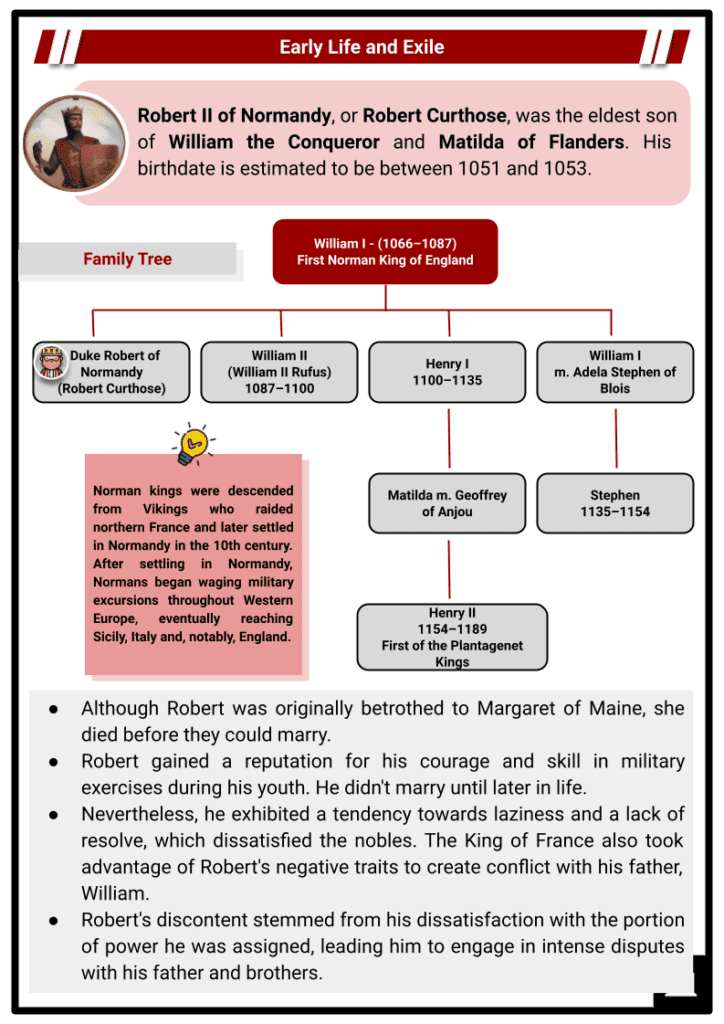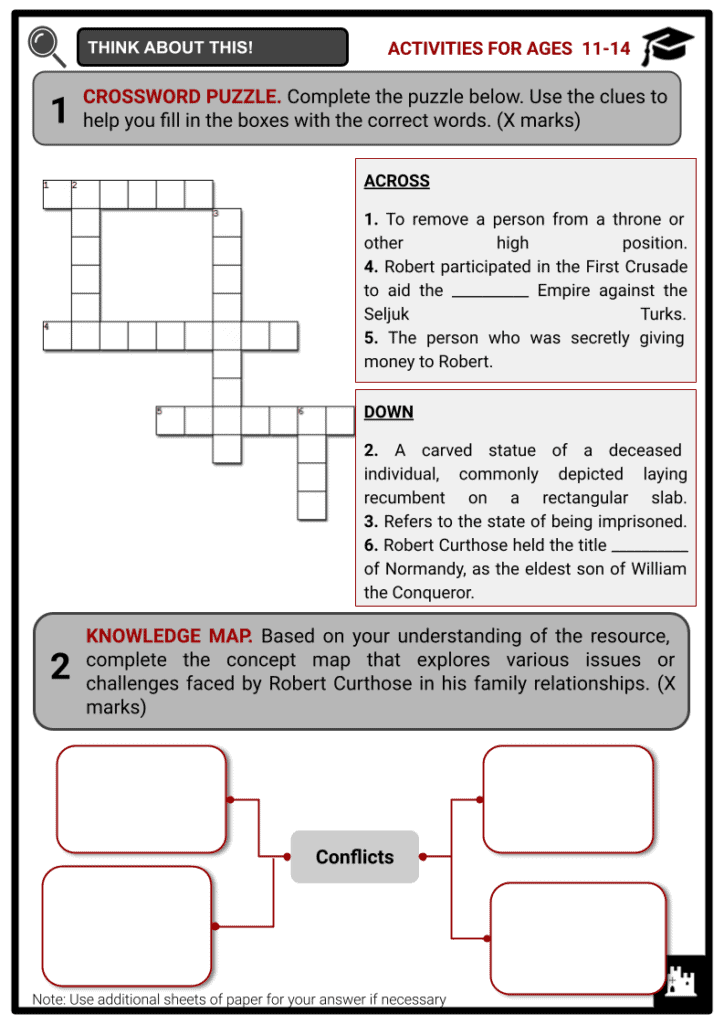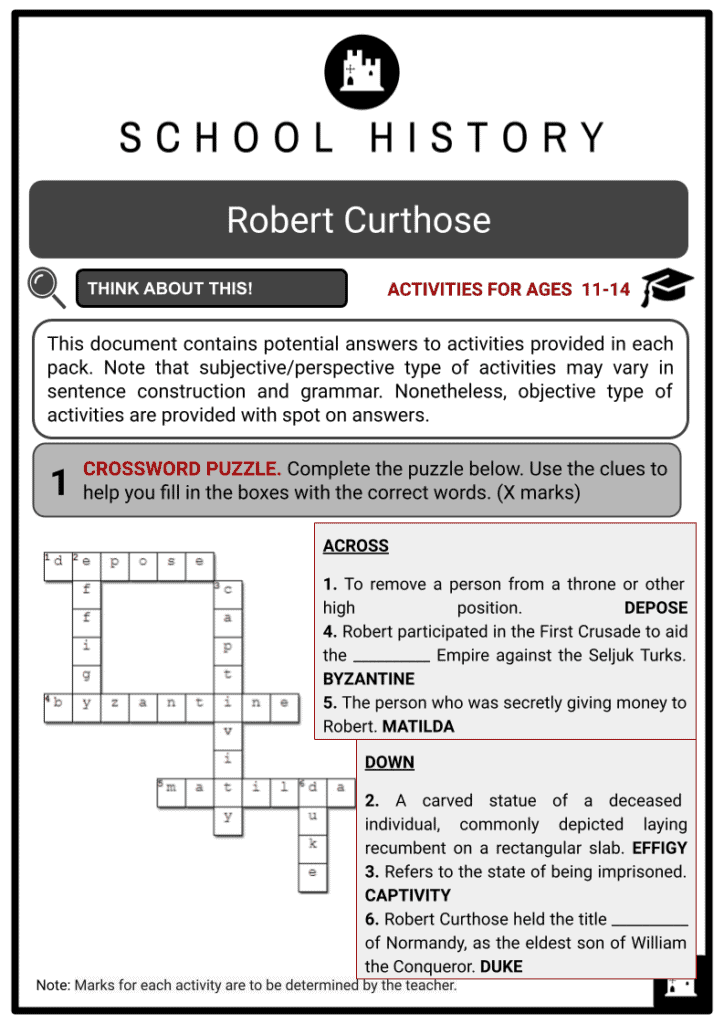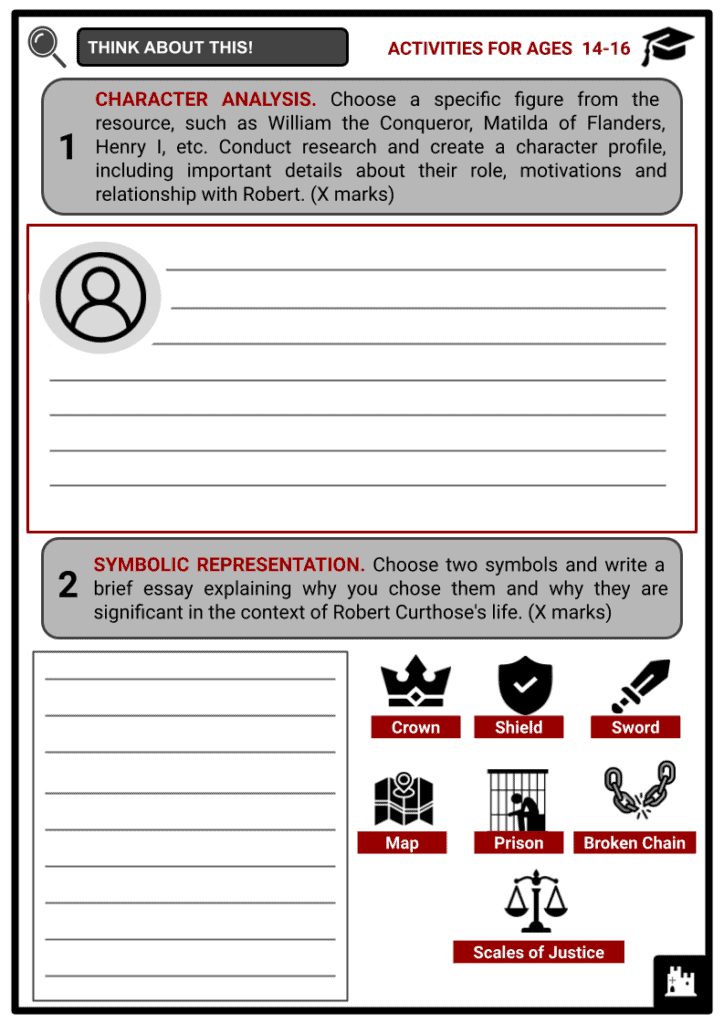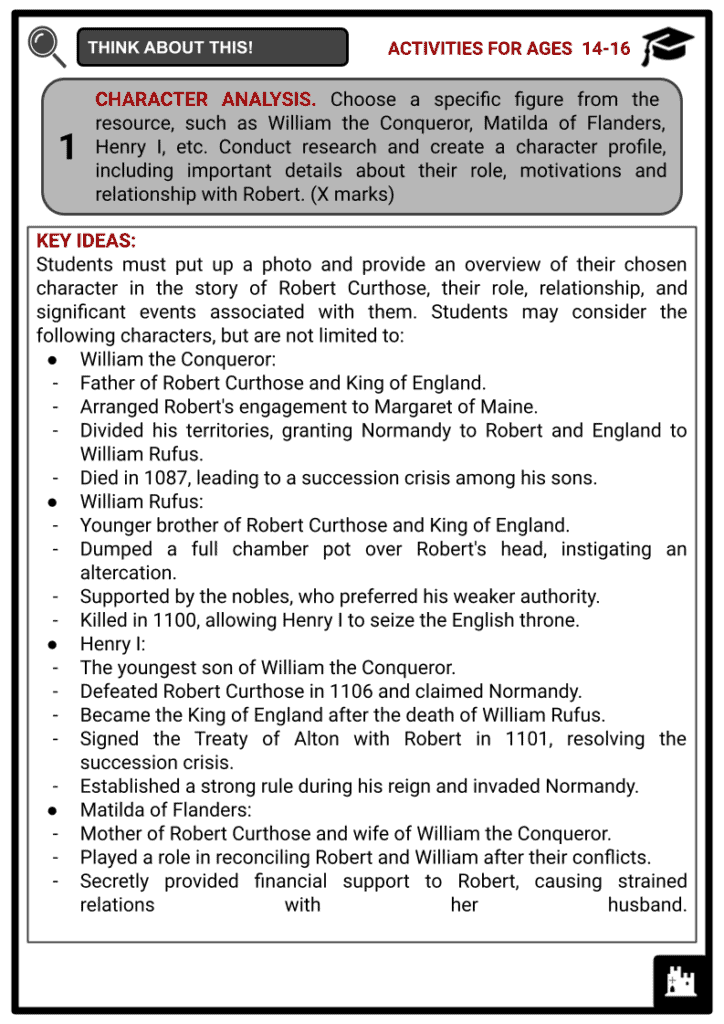Robert Curthose Worksheets
Do you want to save dozens of hours in time? Get your evenings and weekends back? Be able to teach about Robert Curthose to your students?
Our worksheet bundle includes a fact file and printable worksheets and student activities. Perfect for both the classroom and homeschooling!
Summary
- Early Life and Exile
- Robert as the Duke of Normandy
- Life in Captivity and Death
Key Facts And Information
Let’s know more about Robert Curthose!
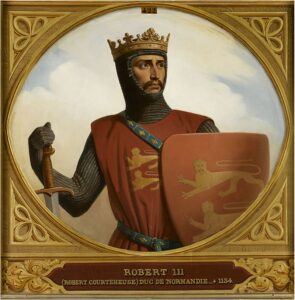
Robert Curthose, the firstborn son of William the Conqueror, held the title of Duke of Normandy. His rule was marked by internal disputes and power struggles, culminating in his defeat by his brother, Henry I, in 1106. As a consequence, Robert spent the remainder of his life in captivity. Renowned for his military prowess, his story serves as a testament to the complexities of mediaeval politics and familial rivalries.
Early Life and Exile
- Robert II of Normandy, or Robert Curthose, was the eldest son of William the Conqueror and Matilda of Flanders. His birthdate is estimated to be between 1051 and 1053.
Norman kings were descended from Vikings who raided northern France and later settled in Normandy in the 10th century. After settling in Normandy, Normans began waging military excursions throughout Western Europe, eventually reaching Sicily, Italy and, notably, England.
- Although Robert was originally betrothed to Margaret of Maine, she died before they could marry.
- Robert gained a reputation for his courage and skill in military exercises during his youth. He didn't marry until later in life.
- Nevertheless, he exhibited a tendency towards laziness and a lack of resolve, which dissatisfied the nobles. The King of France also took advantage of Robert's negative traits to create conflict with his father, William.
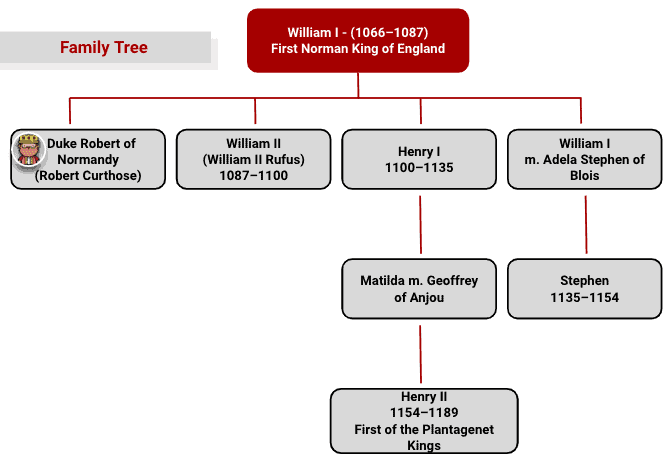
- Robert's discontent stemmed from his dissatisfaction with the portion of power he was assigned, leading him to engage in intense disputes with his father and brothers.
- Robert's father, who had arranged his engagement to Margaret, appointed him Count of Maine in 1063.
- However, in 1069, the county of Maine revolted against Norman control and returned to the authority of Hugh V of Maine.
- In 1077, Robert began his first insurgency against his father as a result of a joke committed by his younger brothers, William Rufus and Henry, who spilt a full chamber pot over his head.
- Robert became outraged and, encouraged by his brothers, began a brawl with them that was only stopped by their father's intervention.
- Robert was enraged when King William failed to punish his brothers, feeling that his dignity had been wounded.
- The next day, Robert and his followers attempted to take over the castle of Rouen.
- When King William ordered their arrest, Robert and his comrades sought refuge with Hugh of Châteauneuf-en-Thymerais.
- When King William attacked their base at Rémalard, they were forced to escape once more.
- Before raiding Vexin County and causing such chaos, his father, King William, joined forces with King Philip I of France to put a stop to his rebellious son.
- When King William discovered that his wife, Queen Matilda, was discreetly sending money to her son, their relations were strained.
- In a fight in January 1079, Robert unhorsed King William and hurt him, stopping his attack only when he recognised his father's voice.
- King William cursed his son after being humiliated. The siege was eventually raised, and King William returned to Rouen.
- At Easter in 1080, Queen Matilda managed to reconcile William the Conqueror and Robert. However, shortly after his mother's passing in 1083, Robert left the court and spent several years travelling through France, Germany and Flanders.
- Robert also tried to propose to Matilda of Tuscany in Italy, but his attempts were unsuccessful.
Robert as Duke of Normandy
- William the Conqueror died in 1087 from wounds sustained in a riding accident at the siege of Mantes. He reportedly sought to disinherit his eldest son upon his death but was persuaded to split the Norman territories between his two eldest sons.
- He granted the Duchy of Normandy to Robert and the Kingdom of England to William Rufus. Henry, the youngest son, was given money to buy land.
- Robert was thought to be the weaker of the two oldest sons and was often preferred by the nobles who controlled holdings on both sides of the English Channel because they could easily circumvent his authority.
- When their father died, the two brothers agreed that they would be each other's heirs. This peace, however, lasted less than a year until barons joined with Robert to depose Rufus in the 1088 Rebellion. The hostilities lasted three to six months. It was a failure, in part because Robert did not show up to support the English rebels.
The First Crusade
- In 1096, Robert raised an army and left Normandy to join the First Crusade and journey to Jerusalem to aid the Byzantine Empire against the Seljuk Turks. To finance the crusade, he mortgaged his duchy to his brother William for 10,000 marks.
The First Crusade (1095–1102) was a military operation conducted by Western European soldiers to retake Jerusalem and the Holy Land from Muslim dominion. The Crusade, conceived by Pope Urban II in response to a request from Byzantine emperor Alexios I Komnenos, was a success, with Christian armies capturing control of Jerusalem on 15 July 1099.
- During the winter of 1096–1097, Robert travelled to Italy with his brother-in-law, Count Stephen of Blois.
- According to Orderic Vitalis, an English chronicler, it was then that he met his future bride, Sybilla of Conversano, daughter of the wealthy Norman count of Conversano Geoffrey, and fell in love with her.
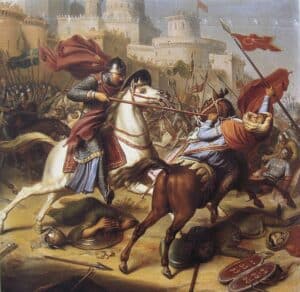
Jean-Joseph Dassy's depiction of Robert Curthose during the Siege of Antioch - Robert and Stephen were the last of the major nobility to arrive at Constantinople, but they were greeted with respect by Emperor Alexios who had memories of Robert's grandfather's journey to Constantinople during his trip to Jerusalem.
- Both then vowed, along with the other crusading leaders, an oath to restore all Byzantine-held cities to Alexios and recognise his superior status.
- In June 1097, Robert and Stephen accompanied the main forces of the crusading army invading Nicea, which was successfully captured on 19 June.
- Robert thereafter took part in all subsequent military actions of the crusade and was among the crusading armies that captured Jerusalem in August 1099.
- Robert's completion of his crusader vows was a personal triumph: he had demonstrated military talents as well as the capacity to arbitrate between opposing factions in the crusading army.
- Around September 1099, Robert departed the Holy Land and returned via Constantinople, where Emperor Alexios lavished him with gifts and offered him a position in the Byzantine Empire, but Robert declined.
- Instead, he returned to Southern Italy, where he wintered again, and married Sybilla, who also brought him a large dowry, allowing him to raise the cash needed to repurchase his duchy.
- However, when William II died on 2 August 1100, while Robert was still on his way back to Normandy, his brother Henry was able to seize the English throne for himself.
- Upon his return, Robert, supported by his close adviser Flambard and some Anglo-Norman nobles, claimed the English throne on the basis of the 1087 pact, and led an invasion to depose his brother Henry in 1101.
- He landed with his army at Portsmouth, but Henry was able to repel the invasion due to a lack of popular support among the English as well as Robert's own mishandling of the invasion tactics.
- Diplomacy forced Robert to surrender his claim to the English crown in the Treaty of Alton.
- Orderic said that Robert squandered his fortune and became so impoverished that he had nothing to wear, although this appears improbable given that Robert would have been reduced to poverty so soon after his return and may instead refer to his pre-Crusade persona.
Henry Beauclerc (Henry I) and his older brother Robert Curthose signed the Treaty of Alton in 1101, in which Robert consented to recognise Henry as the king of England in return for an annual allowance and other concessions. The agreement temporarily resolved a succession crisis among the Anglo-Norman kings.
Life in Captivity and Death
- In 1105, Henry invaded Normandy due to Robert's constant stirring of conflict with his brother in England as well as civil disturbances in Normandy itself.
- In 1106, Henry decisively defeated Robert's army at the Battle of Tinchebray and claimed Normandy for the English crown, a status that lasted nearly a century.
- Robert was captured after the war and imprisoned in Devizes Castle in Wiltshire for 20 years before being transferred to Cardiff.
- Robert passed away in his early 80s at Cardiff Castle in 1134. The Conqueror's eldest son, Robert Curthose, once Duke of Normandy, was laid to rest in Gloucester's St Peter's Abbey Church. His bog wood effigy is displayed atop a funeral chest that is adorned with the Nine Worthies' attributed arms. Later, the building was transformed into Gloucester Cathedral.
Robert's Descendants
- Robert had three illegitimate children: Richard, who passed away hunting in the New Forest in May 1100; William, Richard's full brother; and a daughter who married Helias of Saint-Saens. William went to the Holy Land after 1106 and was made Lord of Tortosa, but he vanishes from history after 1110.
- William Clito, who was born on 25 October 1102 and became the heir to the Duchy of Normandy, was the only child Robert and Sybilla of Conversano had. They were married while Robert was returning from the Crusade. However, William’s two attempts to conquer Normandy (1119 and 1125) were unsuccessful and he died in 1128.
- Sybilla, who was admired and frequently lauded by contemporary chroniclers, died soon after the birth of William Clito.

